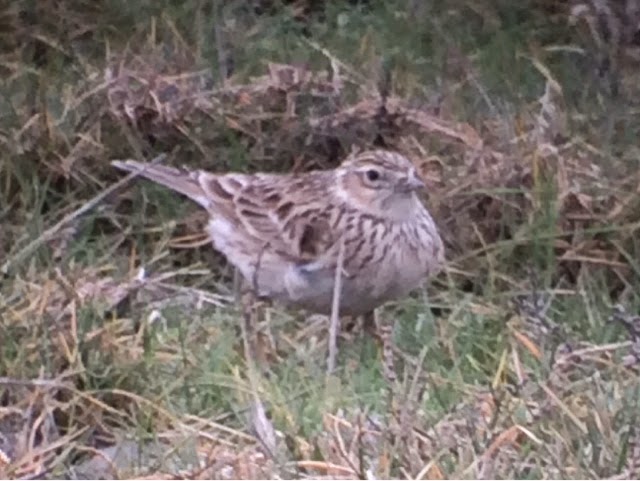There were no brown tones in the fringes to the feathers giving it a much paler look and the primary projection appears very short. I posted these images on twitter and Martin Garner came back with:
So I quickly headed off to look at the relevant Lees and Ball (2011) paper in BB which describes a grey Skylark from Lincolnshire in 1988 which seemingly didnt fit dulcivox. I had a look at this and the Shirihai (1986) Oriental Skylark Paper. The latter was of interest due to the very short primary projection of the bird in question and this being a feature of Oriental Skylark.
Upon reading the RIACT statement and the Lees and Ball paper it became apparent that the primary difference between the various subspecies is the concentration of melanin in the feathers and thus a bird with paler feathers could be an aberrant bird rather than a vagrant from further east. Without trapping the bird and getting some DNA or isotope based fun it would seem it cant really be progressed anywhere.
Then Peter Stronach forwarded me his picture of the Whalsay bird from 2007 which was put forward as a potential dulcivox. The picture reminds me of how I initially saw the bird with the normal Skylark. I kicked myself for not getting both in the frame.
 |
| Whalsay Skylark, 5th October 2007 (Peter Stronach). |
So what to make of it? In old money it seems to fit Alauda arvensis dulcivox for plumage but it could in theory be a pale standard Skylark with a deficiency of melanin. My gut feeling is it is from further east than Bridgwater. I didnt hear anything other than standard Skylark calls which would seem to point against it being Oriental Skylark Alauda gulgula but I cant really work out why it had such a short primary projection. Overall a very interesting bird and one I have learnt plenty from without really resolving much. Any thoughts on its possible identity or point of origin would be gladly received.







